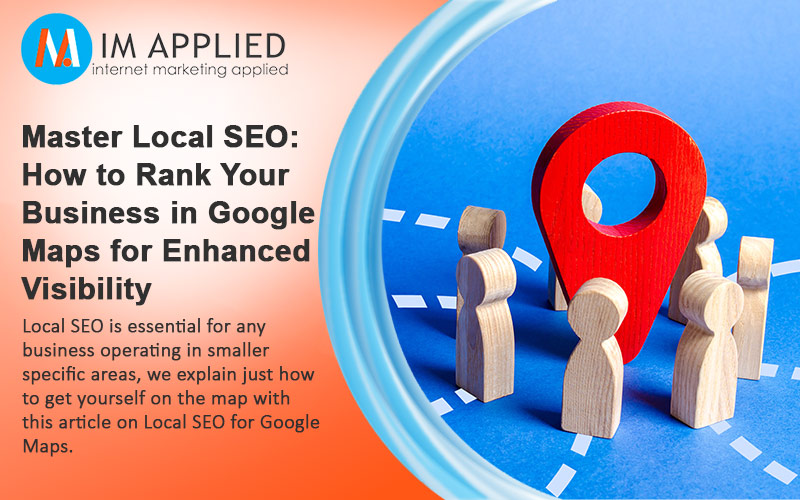I cannot tell you the number of times I have asked about a company’s digital marketing strategy to get told something like, “We do SEO and run Google ads”. These are elements of digital marketing, but they are digital marketing tactics, not strategies.
In the digital marketing space, these concepts tend to get confused quite a bit, often because digital marketing companies themselves confuse the terminology.
Does it really matter?
Very much so! Understanding the difference between the two and the dependence of one on the other will ensure you don’t gamble with your marketing budget by implementing tactics that do not support your marketing objectives and desired outcomes.
In this article, we will discuss the difference between a digital marketing strategy and digital marketing tactics, the importance of having a strategy in place before implementing tactics, and how you can create a digital marketing strategy that works for your business.
What Is The Difference Between A Digital Marketing Strategy And Digital Marketing Tactics?
Simply put, a digital marketing strategy is a plan of action that outlines the overall approach and goals for digital marketing, and how a business will use digital channels to achieve its marketing goals. This strategy should be based on
- a clear understanding of your company’s overall marketing objectives,
- identification of your target market,
- tactics to be used,
- budget and resources required,
- timelines, and
- how you will monitor results.
It should ideally form part of your company’s overall marketing strategy and be in line with your business strategy.
Digital marketing tactics are the specific actions or measures that will be used to achieve the objectives of the digital marketing strategy. They may include things like website design, development of sales funnels, search engine optimisation (SEO), Google ads, email marketing, social media marketing, and so on.
Why Is It Important To Have A Digital Marketing Strategy In Place Before Implementing Tactics?

Let’s consider for a moment two very different companies that implement the same digital marketing tactics without giving consideration to a digital marketing strategy.
Company 1:
The first company offers 24/7 emergency plumbing services and is looking to drive leads that they close offline. They choose to spend their digital marketing budget on SEO and Google ads.
They receive an almost immediate return on investment from their ads and, over time, reap the rewards of their SEO campaign which results in more leads at a lower cost than the ads, further improving their ROI.
Their marketing campaign was successful because their tactics were right for their target market. SEO and AdWords are excellent tactics to connect with people who are actively searching for your product or service.
Company 2:
The second company offers a SAAS solution to the short-term insurance industry. Their solution is superior to competing solutions in its ability to reduce cost, manage data efficiently, and improve the customer experience.
They also choose to spend their digital marketing budget on SEO and Google ads to drive leads that they will close offline.
However, they find that the people clicking through their ads are consumers and not the decision-makers of the insurance companies they are targeting. Over time, their SEO campaign results in top rankings for targeted search terms, but fails to bring in qualified leads. The results – wasted time and a load of money down the drain.
Their marketing campaign was unsuccessful because their tactics were wrong for their target market.
Their target market is not actively searching online for their solution. They already have a solution and are unlikely aware that there is a better solution that they should investigate. And since it would be less painful to have their teeth extracted without anaesthetic than to switch everything over to a new system, an ad promoting a better solution would unlikely cut it anyway.
For both these companies, implementing digital marketing tactics without first formulating a digital marketing strategy was a gamble.
The advantage of first creating a Digital Marketing Strategy
If company 2, started with a digital marketing strategy, they may have identified that their target market hangs out on LinkedIn and that they would need to implement a strategy that nurtures relationships, demonstrates authority in their field, and educates their audience about the benefits of their solution and the high cost of not switching.
Organic LinkedIn outreach, LinkedIn Marketing, and content marketing would be far better tactics than SEO and AdWords for lead generation to achieve their objectives. SEO would still be an effective tactic, but only if the objective were brand awareness as opposed to lead generation.
Similarly, if company 1 based their tactics on a predetermined strategy, they would steer clear of possible future temptation to expand their marketing efforts to include social media marketing, for instance, because they would know that a disruptive marketing tactic does not line up with their target audience.
So to sum it up, a digital marketing strategy helps you to define your goals and objectives, and to develop a plan for how you can use digital marketing tactics to reach these goals.
By creating the strategy first, you ensure that you only implement tactics that are in line with your strategy and that will help to achieve your goals. No more gambling with your marketing budget.
How Can You Create A Digital Marketing Strategy That Works For Your Business?

Creating a digital marketing strategy can seem daunting, but it doesn’t have to be. You likely already understand the benefits of your product or service and your unique value proposition. By getting a clear understanding of your audience and objectives, you can create a plan that will help you achieve your goals.
Target Market
Start by defining your target audience:
- Who are you trying to reach?
- What are their needs and pain points?
- Where do they ‘hang out’ online?
- How far are they along the hierarchy of effects (customer situation)?
Once you know who you’re talking to, you can create content that speaks to them and guide them along their customer journey.
Objectives
Next, decide what kind of objectives you want to achieve with your digital marketing campaign/s.
- Are you looking to increase brand awareness?
- Build brand authority?
- Generate leads?
- Make sales?
Tactics
When you know what you want to accomplish, you can choose the tactics that will help you get there.
For example, if you’re looking to increase brand awareness, investing in SEO or social media marketing may be a good tactic.
Content marketing can go a long way to help build brand authority.
If you are a B2B business and your target audience is investment brokers, a LinkedIn marketing campaign that targets investment brokers could be an effective marketing tactic.
You may want to set up a landing page to generate leads or take it a step further and create a sales funnel to convert these leads to sales.
To target people who are actively searching for your product or service, SEO and search engine marketing (like google ads) are ideal tactics.
Timeline and Budget Allocation
Once you have decided on your objectives and the tactics that you will implement to achieve these objectives, it is important that you set up a timeline to execute your strategy and allocate the necessary budget.
Monitor
Finally, decide on the metrics and method that you will use to monitor progress so that you can adjust your tactics as needed to achieve your objectives.
For example, if you are running Google ads and sending people to a landing page to generate leads, some metrics that you may want to monitor could include:
- The number of impressions received (number of times your ad showed)
- Number of clicks (people who clicked through from your ad to visit your landing page)
- Cost per click (what each website visitor costs)
- Number of leads
- Cost per lead
Monitoring these metrics will help you understand the performance of each step that led to the conversion, allowing you to tweak steps to improve your ROI.
Wrapping It Up
Understanding what a digital marketing strategy is and how to implement relevant digital marketing tactics that drive this strategy is key to growing your business through your digital marketing efforts.
Do you have a sound digital marketing strategy in place and are you implementing the correct tactics to achieve your goals?
If not, now is a good time to create one. Follow the tips in this post or reach out to us if you would like help creating your strategy.










